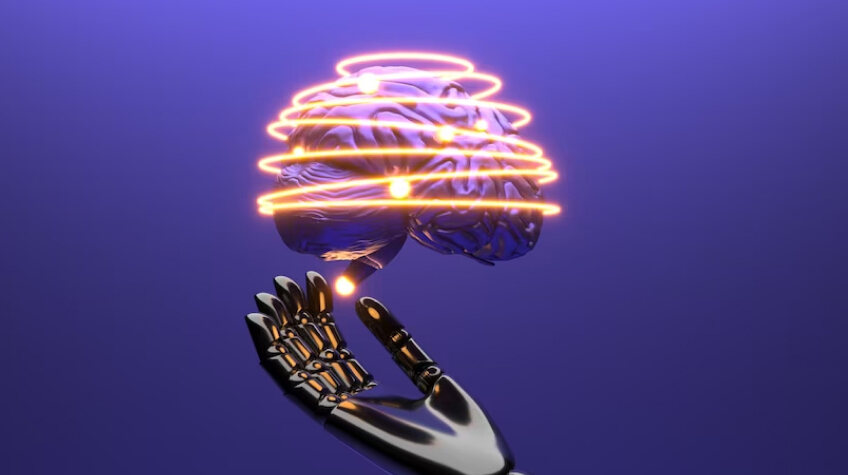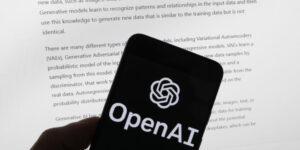
Artificial Intelligence is in the mainstream today. Everything from our household equipment to automated cars incorporates AI. In such a situation, the need for AI specialists is obvious in an organization.
So, if you are an AI specialist looking for a job, then this post is for you.
In this post, we shall discuss with you the top 60 questions that you may prepare for your next interview.
Let’s get started…
THE SIXTY MOST COMMONLY ASKED ARTIFICIAL INTELLIGENCE QUESTIONS AND ANSWERS
Here is our list of the top 60 Artificial intelligence interview questions and answers for you. Take a look:
1. How Would You Define AI?
Ans: This is one of the most significant Artificial intelligence interview questions and answers. Artificial intelligence (AI) is a field of computer science that aims to develop machines with human-like intelligence. Intelligent machines, in this context, are those that exhibit human-like behaviour, cognition, and decision-making abilities. The term “artificial intelligence” is made up of two words “artificial” and “intelligence,” which means “man-made thinking ability.”
So, Artificial intelligence allows people to build machines with pre-programmed algorithms that act like humans.
2. Why Is AI So Important?
Ans: When it comes to Artificial intelligence interview questions and answers, this is an important question that you should know.
AI has transformed numerous facets of modern life, including education, transportation, healthcare, entertainment, and so on. The technology provides numerous advantages, including increased efficiency, enhanced precision, and enhanced personalization.
Using AI, people can develop machines with cognitive abilities comparable to those of humans. Artificial intelligence streamlines our daily lives by automating mundane tasks, allows us to solve difficult issues, and conserves resources like time and effort.
3. What Exactly Are AI’s Intelligent Agents, And How Do They Work?
Ans: Intelligent agents are autonomous machines that gather information via sensors and then take action to achieve their objectives. They can be as basic or complicated as needed and can be trained to improve their performance on the job.
4. Describe Some Practical Uses Of AI.
Ans: You must always be aware of the practical uses of AI if you’re preparing for Artificial intelligence interview questions and answers.
Here are just a few examples of how AI is being put to use in the real world:
The use of AI has dramatically improved travel. All you have to do is to put in your destination on either Google Maps or Apple Maps to get where you need to go. The program then determines where to go. Now AI is being added to Google Maps and Apple Maps, providing consumers with a far superior experience.
Social Media platforms, including Instagram and Facebook, use AI. When you upload any image on Facebook, the site uses AI to recognize your face and make friend suggestions. When you use Instagram, the site can decipher the intended meaning of an emoji based on the surrounding text, and so on.
When we type a query into the Google search bar, we are presented with relevant suggestions almost instantly. This is made possible by a number of different artificial intelligence (AI) technologies.
OTT Platforms, such as Netflix, Amazon Prime, etc., use AI. The moment you open these apps, they provide you with suggestions for shows and movies based on your past experience.
Shopping apps, such as Amazon, Myntra, and others, make use of Artificial Intelligence. The moment you start looking for items, they provide you with suggestions similar to those you’re looking for.
Ride-sharing apps, such as Ola, Uber, etc., use AI in order to identify the type of ride, the cost of the journey, how much time the cab will take to arrive, and so on.
5. What Is Machine Learning, And How Does ML Associate To Artificial Intelligence?
Ans: This is yet another important Artificial intelligence interview question and answer. Machine Learning is a subfield or subset of Artificial Intelligence. It is the process of teaching a computer a new thing without giving it explicit instructions by making use of mathematical models of data. Due to this, a computer system is able to continue learning on its own and improving itself based on the experiences it has.
6. What Exactly Is “Deep Learning,” And How Is It Connected To AI?
A: Deep Learning is the branch of Machine Learning. It refers to the practise of employing neural networks with multiple layers to do complex data processing. By exposing itself to these massive volumes of data, the software may learn to recognise and process information, allowing it to take on jobs like speech and image recognition. When it comes to learning at a profound level, nothing beats the efficacy of a deep neural network, which consists of many layers of neural networks piled on top of one another.
7. How Do You Distinguish Between AI (Artificial Intelligence), ML (Machine Learning), And DL (Deep Learning)?
Ans: It is again an important Artificial intelligence interview question and answer. Here is a brief comparison of artificial intelligence, machine learning, and deep Learning is shown below:
Intelligent Machines, Intelligent Learning, and Deep Learning
Artificial Intelligence is a method for developing artificially intelligent computers that act in ways that are eerily similar to those of humans. Machine Learning is a subset of AI that can pick up new skills by analysing old ones. In contrast, Deep Learning is the branch of Machine Learning and artificial intelligence that takes its cues from human brain cells (also known as neurons) and attempts to replicate the brain’s logic.
AI processes structured and semi-structured data. Machine learning works with both fully and partially organized data. In comparison, deep Deep Learning works with both structured and unstructured data.
Al needs a massive amount of data to function. Whereas ML can function with a smaller amount of data. Unlike ML, DL requires a massive amount of data to function.
The ultimate goal of artificial intelligence is to give machines the ability to reason independently. The purpose of ML is to give machines the ability to learn from their own mistakes. The purpose of deep Learning is to use a variety of algorithms to solve difficult problems in the same way that the human brain does.
8. What Exactly Are Neural Networks, And How Are They Connected To Artificial Intelligence?
Ans: Neural networks are a kind of Machine Learning algorithms. The neuron part represents the computational aspect of a neural network, while the network part describes how the neurons are connected to one another. Input is passed from neuron to neuron in neural networks, which allows the networks to develop a deeper level of meaning as the input travels through the network. Because the networks are connected to one another, it is possible to process more complicated data in a timely manner.
9. Can You Explain The Many Artificial Intelligence Subfields?
Ans: You must be aware of AI subfields thoroughly if you’re preparing for Artificial intelligence interview questions and answers.
Many AI subfields include
- Machine Learning
- Deep Learning
- Neuronal System
- Knowledge-Based System
- Soft Computing
- Robotics
10. How Many Different Kinds Of Machine Learning Are There?
Ans: It is an important Artificial intelligence interview question and answer to prepare. There are essentially three categories of machine learning: Supervised Learning, Unsupervised Learning, and Reinforcement Learning.
In order for a machine to learn from data, it may require human supervision, a process known as Supervised Learning. Supervised learning models can be developed using annotated data collection. Supervised machine learning is most useful for solving regression and classification issues.
As the name says, Unsupervised Learning does not require human supervision for the machine to draw conclusions from the data. These models can be trained using the unlabelled dataset. These are put to work in answering questions of association and clustering.
One of the most human-like forms of machine learning is reinforcement learning. The utilised algorithm or agent learns from its experiences in the world. The agent receives reinforcement in the form of rewards—positive reinforcement for well-executed actions and negative reinforcement for those that fall short. Temporal differences, deep adversarial networks, and Q-learning are just a few examples of popular algorithms.
11. What Is Meant By “Q-Learning?”
Ans: Knowing about Q-Learning is essential if you’re preparing for Artificial intelligence interview questions and answers.
Q-learning is a machine-learning technique that allows a model to improve through corrective action iteration. Q-learning is a form of RL that involves question answering. A machine learning model is “trained” through reinforcement learning to behave like a human or animal learner.
The Bellman equation serves as the basis for this. This algorithm has the agent learn the rules that can provide it with the optimum actions to take in order to maximise rewards under specific conditions. The agent’s purpose in Q-learning is to maximise the value of Q, where Q represents the quality of the actions at each stage.
12. What Is Automatic Programming?
Ans: Automatic programming is the process of describing what a programme should do and then having an artificial intelligence system “write” the programme.
13. What Is A Bayesian Network, And What Does It Have To Do With AI?
Ans: A Bayesian network is a graphical representation of the probabilistic connections between a set of variables. It mimics the human brain in variable processing.
14. How Is Deep Learning Applied In The Real World?
Ans: This is one of the most important Artificial intelligence interview questions and answers.
Deep Learning is a type of machine learning that attempts to simulate the way the human brain processes information. It uses the idea of neural networks, which are modelled after human brain cells called neurons, to address difficult real-world issues.
Deep Learning applications include the following:
- Autonomous vehicles
- Healthcare.
- Enhancing photos or images by colourizing the previously black-and-white photos
- Creating New Text, and so on.
15. In What Language Is Artificial Intelligence (AI) Coded?
Ans: There are the five most popular languages used to create AI, namely Python, Java, Lisp, R, and Prolog.
Python is the major language in which Artificial Intelligence and Machine Learning are coded.
16. What Is An AI Intelligent Agent, And Where Do They Function?
Ans: An intelligent agent is a computer programme that can act autonomously, learning from its experiences and adapting to new circumstances. These applications can be used to automatically collect data according to a predetermined schedule or at the user’s request in real-time.
17. How Will You Distinguish Between Supervised and Unsupervised Learning?
Ans: In supervised machine learning, the outputs are given back into the system so that the programme can learn from them and produce more precise results in the future. Supervised Learning requires an initial period of “machine” training. Unsupervised Learning, on the other hand, entails a computer’s ability to learn without any sort of formal instruction.
18. What Is The Connection Between AI And Machine Learning?
Ans: The field of machine learning is a branch of AI. It’s an approach to building AI. The two have no direct correlation, but they go hand in hand since AI uses different Machine learning algorithms and concepts to solve complex problems.
19. Can You Explain Markov’s Decision Process?
Ans: The Markov decision process (MDP) can be used to solve an issue in reinforcement learning. Therefore, the RL problem is formalized using MDP. It’s the mathematical means of fixing a problem in reinforcement learning. The primary objective is to maximise benefits by selecting the best course of action.
20. Please Define “Reward Maximisation.”
Ans: The phrase “reward maximisation” is fundamental to reinforcement learning because that is what the agent is striving for. In RL, a reward is the positive feedback received when an action has been taken to change the current situation. Agents are rewarded for excellent behavior that results from the use of optimal policies and punished for undesirable behavior with the loss of a reward. Through the use of optimum strategies, the agent seeks to maximise these rewards, hence the phrase “reward maximisation.”
21. Give Some Examples Of Parametric And Non-Parametric Models.
Ans: Parametric and non-parametric models are the two most common in machine learning. In the context of machine learning, parameters are the predictor variables. The parametric model is built with a predetermined set of parameters. Parametric models commonly include linear regression, naive Bayes, perceptron, Lasso regression, Ridge regression, logistic regression, etc. In contrast to parametric models, non-parametric models do not make clear predictions about the functional form, such as a linear model. The number of parameters in the non-parametric model can vary. Also, several data-related assumptions are taken into account in it. For large datasets when the context is unavailable, these models perform well. K-Nearest Neighbour, Decision Tree, Support Vector Machines (SVMs) with Gaussian kernels, etc., are all non-parametric models.
22. What Are Some Common Misconceptions People Have Concerning AI?
Ans: There have been numerous misconceptions about AI ever since the field first began to emerge. Some of the most common misconceptions concerning AI include
Some people think this is a brand-new form of technology, yet the idea was first published in an English newspaper all the way back in 1840.
The common misconception about AI is that it can do its job independently of humans. However, in reality, each AI-based system still depends on humans and likely always will. Insight into the data requires data gathered by humans.
Artificial intelligence is a threat to mankind, which is, of course, not true at all. AI is not a threat to human existence if responsibly.
The widespread belief that AI would cause a massive loss of jobs is based on an incomplete understanding of how this technology is actually expanding the available range of occupations.
23. Define The Term “Hyperparameter.”
Ans: In machine learning, a hyperparameter is a setting that has significant influence over the learning process as a whole. Activation functions, learning rate, Hidden Layers, Hidden units, etc., are all examples of hyperparameters. These values are not part of the model itself. A more effective method can be achieved by careful choice of hyperparameters.
24. Describe How The Hidden Markov Model Works.
Ans: A probabilistic model known as a Hidden Markov Model (HMM) is one that is composed of a series of hidden states, each of which is responsible for the generation of an observation. The purpose of hidden state mixture modelling (HMM) is to predict the sequence of hidden states based on a sequence of observations. The hidden states themselves are typically not directly visible. Reinforcement learning, temporal pattern recognition, etc., are some of the many uses for the HMM.
25. How Important Is Computer Vision To AI?
Ans: Computer vision is one of the many subfields inside the larger umbrella of artificial intelligence (AI). Teaching a computer to recognise and analyse visual information, such as images and video, is known as computer vision. In order to solve difficult problems like picture processing and object recognition, computer vision makes use of artificial intelligence technology.
26. What Are The Main Distinctions Between Strong AI And Weak AI?
Ans: Strong AI: Strong AI research aims to create actual intelligence, which is defined as a human-made intellect with sentiments, cognition, and emotions on par with humans. The development of artificial intelligence (AI) entities with human-level perception, analysis, and decision-making skills is still a hypothesis.
Weak AI: Expert systems and robots designed to help people with difficult problems in the real world are the focus of “weak AI,” the current phase of artificial intelligence development. It focuses on the design of intelligent computers and agents that can aid people in tackling difficult challenges in the real world. Alexa and Siri are two examples of artificial intelligence systems that fall under this category.
27. Explain Turing Test In Artificial Intelligence?
Ans: In the field of Artificial Intelligence, the Turing test is widely used as a measure of cognitive ability. In 1950, Alan Turing proposed what is now known as the Turing test. It’s a way to see if a computer can mimic human thought processes. For a machine to pass this test of artificial intelligence, it must demonstrate the ability to behave indistinguishably from humans.
The test entails a dialogue between a computer, a human respondent, and an interrogator, who must distinguish which response is from the machine based on the questions and responses provided.
28. How Many Types Of Agents Are There In Artificial Intelligence?
Ans: Simple Reflex Agents: Simple reflex agents behave solely in response to the current situation without taking into consideration the history of the environment or the ecosystem’s interactions with it.
Simulation-Based Reflex Agents: These models determine their views of the environment based on the established models. This model also keeps account of the internal conditions, which may be altered in response to changes in the external environment.
Goal-Based Agents: The objectives that have been designated to these agents determine their actions. The sole purpose of goal-based agents is to achieve this objective. If the agent is presented with multiple options, it will select the one that brings it one step closer to attaining its goal.
Utilitarian Agents: Achieving an objective is not always sufficient. To reach your destination, you must choose the quickest, safest route feasible. Agents make decisions based on the utility (preferences) of various options using utility-based reasoning.
Educative Agents: These agents are capable of learning from their prior experiences.
29. What Is The Easiest Method To Evaluate A Machine’s Intellect?
Ans: Using the Turing Exam.
30. What is Overfitting? What are Some Solutions to this Problem in Machine Learning?
Ans: One of the major problems with machine learning is overfitting. Overfitting occurs when a machine learning system attempts to catch all of the data points and, in doing so, captures noise as well. Overfitting includes both low bias and high variance.
Here is how to prevent Overfitting in ML:
- Cross-Validation
- Ensembling
- Regularization
- Additional data for training
- Paring Down Extraneous Elements
31. Describe How You Can Prevent Overfitting in Neural Networks?
Ans: Overfitting in neural network models can be avoided in part by the use of the dropout approach. Regularisation is a training method in which a subset of neurons is removed at random.
32. Which Components Make Up For An Expert System?
Ans: The fundamental parts of any expert system are as follows
User Interface: UI or user interface is one of the most important expert system components. It helps people to communicate with an expert system to get help finding a solution to an issue.
Inference Engine: It is the “brain” or “processing unit” of the expert system. It uses many inference rules to the data in order to draw a conclusion based on the available information. The system utilises an inference engine to access the KB and retrieve the data it contains.
Knowledge Base: A knowledge base is a repository for authoritative and topic-specific data.
33. What Is NLP?
Ans: Natural Language Processing (NLP) is a subfield of AI that focuses on analysing and processing language. It paves the way for computers to learn human speech and use it to their advantage.
34. Can You Explain The Different Parts That Makes Up For NLP?
Ans: Analysis of syntax and semantic content are two of the most important methods utilised in natural language processing. In natural language processing (NLP), syntax is used to determine meaning from a language based on grammatical rules. In semantic analysis, the grammatical structure of sentences—including the arrangement of words, phrases, and clauses—is dissected in order to identify the connections that exist between different terms when they are placed in a certain setting. Semantic content is an important part of Natural language processing (NLP) systems.
35. What Is Computer Vision? What Is The Role Of Computer Vision In Artificial Intelligence?
Ans: Computer vision is a subfield or subset of artificial intelligence (AI) that enables computers and other systems to extract useful data from digital photos, videos, and other visual inputs and then either act on that information or make suggestions based on that information. Computer Vision uses Artificial Intelligence technologies to solve difficult problems like image processing, object detection, etc.
36. What Is A Game Theory? How Many Types Of Game Theories Are There?
Ans: Understanding the dynamics of a game and achieving the best possible outcome for all participants is central to game theory. Instead, Inverse Game Theory takes into account player strategies and goals when designing games. Therefore, Inverse Game Theory is extremely important when designing environments for AI Agents.
There are five types of game classification at present, which are as follows
- Asymmetric and Symmetric Games
- Co-operative and Non-Co-operative Games
- Imperfect Information and Perfect Information Games
- Simultaneous and Sequential Games
- Zero-Sum and Non-Zero Sum Games
37. Describe The Minimax Algorithm And Its Terminology.
Ans: The minimax algorithm is a decision-making procedure in game theory that employs a backtracking algorithm. By assuming that the opposing player is likewise playing perfectly, this algorithm determines the best course of action for a player.
The MAX and MIN variables are the fundamental building blocks of this method.
The Minimax Algorithm makes use of the following
- A game tree is a hierarchical diagram of all potential play.
- The board’s basic configuration.
- The game ends in a terminal state or a specific configuration of the board.
- Utility function, or the function used to quantify the game’s outcome.
38. Why Is Game Theory Significant In AI?
Ans: In game theory, players navigate a multi-agent setting where one agent’s decisions have consequences for their opponents’ decisions. There is a close relationship between game theory and artificial intelligence. Multiple agents work together to pursue a common goal in a multi-agent environment, and AI researchers frequently turn to game theory to allow some of the essential characteristics needed in this setting.
Popular games like Chess and Poker are examples of logical games with established rules. Artificial intelligence is used to develop and implement algorithms in order to play games online or digitally, on Mobile, laptop, etc.
39. What Is A Chatbot? How Does A Chatbot Relate To AI?
Ans: Chatbot is a computer programme that mimics human conversation through the use of natural language processing. Chatbots are created using Artificially intelligent (AI). Chatbots make conversations with customers a breeze for organizations. They can chat with these computer programmes on a website, through an app, or through any other messaging programmes. Chatbots are basically digital assistants. They may carry on conversations with humans through textual means as well as through voice instructions. The vast majority of businesses today rely heavily on AI chatbots to offer round-the-clock online support to their customers.
40. What Are Eigenvectors And Eigenvalues? How Do You Find The Eigenvectors And Eigenvalues?
Ans: Eigenvectors and eigenvalues are Linear algebra’s basic ideas.
Vectors with a magnitude of one are called eigenvectors.Eigenvalues are either the magnitude by which an eigenvector is scaled or the coefficients applied to the eigenvector.
Eigenvectors of a square matrix A can be achieved by solving the equation (A – λI) v = O for v.
Eigenvalues of a square matrix A can be achieved by solving the equation |A – λI| = 0 for λ.
41. What Do You Mean By Fuzzy Logic?
Ans: Lotfi Zadeh, a professor at the University of California, Berkeley, developed the concept of fuzzy logic in the 1960s. Fuzzy logic uses “degrees of truth” rather than the traditional “true or false” (1 or 0) Boolean logic that the modern computer is founded on. It makes an effort to answer problems by utilising an open and imprecise spectrum of facts. It includes everything that could happen besides a straight “Yes” or “No.” It can be employed in neural networks since it is similar to human reasoning.
42. How, According To You, Will Artificial Intelligence Evolve?
Ans: Artificial Intelligence is going to stay for a very long time. This technology is anticipated to bring about greater developments in machine learning and natural language processing, which will lead to the development of AI systems that are both more complex and operate on their own. These systems have a wide variety of potential applications, including driverless cars, intelligent robotics, intelligent personal assistants, and so on. Aside from that, AI will play a significant role in healthcare as well. Healthcare facilities will soon have intelligent robotics taking MRIs of patients and maintaining their records. All we have to make sure is that the technology is used in a responsible manner.
43. What Are Artificial Neural Networks, And What Are They Used For?
Ans: Artificial neural networks (ANNs) are a technique in artificial intelligence that mimics the way the human brain processes information. (ANNs) use a variety of deep learning methods to tackle challenging tasks, including pattern recognition, facial recognition, and more.
Deep Learning is a branch of machine learning that employs a network of interconnected nodes or neurons organised in a hierarchical fashion akin to the human brain. Input, hidden, and output layers make up the node layers that make up an artificial neural network (ANN). Each artificial neuron, or node, in the network, has a weight and a threshold with which it interacts.
Artificial neural networks include
- Hidden Layer
- Input Layer
- Output Layer
- Neurons
- Connections
- Fully Connected Feedforward Network
- Weight Matrix
- Activation Function
- Optimization Algorithms, and so on.
44. Describe In Detail A Synthetic Neural Network.
Ans: Inspired by the way real neurons in the human brain work, artificial neural networks are a type of statistical model. Many forms of artificial intelligence, such as deep Learning and machine learning, are integrated into these neural networks. Input and output layers, as well as hidden layers, are all part of an artificial neural network’s structure.
45. Explain What Partial, Alternative, Artificial, Compound, And Natural Keys?
Ans: Partial Keys: Partial Keys are a collection of attributes that uniquely designate small entities and are related to the same base entity. Sometimes referred to as Discriminator.
Alternate Keys: All Candidate Keys besides the Primary Key are referred to as Alternate Keys.
Artificial Key: If no obvious compound or stand-alone key is available, the last resort is to designate a unique number to each occurrence or record to serve as a key, which is known as an artificial key.
Compound Key: A key that consists of more than one field and is used to identify a single record is called the compound key.
Natural Key: The term “natural key” refers to the practice of using one of the data components within a construct as the primary key.
46. To What Extent Do Artificial Intelligence Systems Use Knowledge Representation?
Ans: Knowledge representation is all about the machines’ ability to think. It is used to give AI agents a way to interpret and make use of information about the real world in order to solve difficult AI issues.
The AI agent uses Objects, Events, Performance, Meta-Knowledge, Facts, and Knowledge-base in order to solve difficult AI issues.
47. Define Artificial Neural Network (ANN)?
Ans: Artificial neural network, or ANN, refers to a biologically inspired sub-field of artificial intelligence modeled after the brain. The human brain has billions of neurons that work together to gather information, analyze it, and produce useful conclusions out of it. Neurons exchange information with one another via electrochemical signals. Similarly, ANN is made up of nodes that act like artificial neurons and are interconnected to form a network whose output is dependent on its input in intricate ways. The ANN. is composed of three distinct layers:
Input Layer: The information from files, photos, videos, data sets, and sensors is processed by neurons in the input layer. No computation happens in this section of the Neural Network. The only thing it does is feed information into the Neural Network from the outside world.
Hidden Layer: Then comes the hidden layer. The data from the input layer is passed to the hidden layer, which then does analysis and uses the information to train various Machine Learning models. In this stage, sub-layers are created within the layer to perform tasks, including feature extraction, information integration, decision-making, and action prediction.
Output Layer: After being processed in a hidden layer, data is then sent to the output layer. In this stage, the data is prepared for transmission to the outside world.
48. Which Programming Language Isn’t Used Much In AI?
Ans: Perl is one of the programming languages that are not widely utilised for artificial intelligence development.
49. Which Assessment Is Used To Determine A Machine’s Intelligence? And Why?
Ans: The Turing test is one of the many methods that may be used to determine a machine’s intelligence. In its most basic form, the Turing test determines whether or not a machine is capable of exhibiting intellect comparable to that of a person.
In order for the test to be valid, a human evaluator will be needed in a natural language discussion with both a human and a machine. The human evaluator has to be completely oblivious as to which is which. The Turing test is said to be successful when the evaluator fails to differentiate between the responses provided by humans and machines, as it indicates that the machine possesses intellect comparable to that of a human.
50. What Is “Reinforcement Learning,” And How Does It Work?
Ans: Reinforcement learning, or RL, is a kind of machine learning. In RL, an agent learns how to make decisions in a given environment by interacting with that environment and receiving feedback in the form of rewards or penalties. The agent needs to learn a policy that will translate environmental states into actions so that it can maximise the cumulative reward it receives over time.
The agent does not receive any sort of labelled data or oversight. In fact, it is constantly executing actions, switching states, and receiving feedback in order to learn more about its surroundings.
The most well-known algorithms for RL are
- Q-Learning
- State-based incentives and mandated responses.
- An In-Depth Q-Network
51. In What Ways Has AI Been Impacting Society?
Ans: AI has impacted almost every aspect of human life, from personal to professional. Some domains where AI has had a significant impact include
- Driver-less Vehicles
- Smart Classes
- Intelligent Robots in Healthcare
- Transportation
- Robots in Manufacturing Units
- Entertainment, etc.
52. How Does The Facebook Face Recognition Algorithm Operate?
Ans: When you upload a photo to Facebook, the site uses a technology called DeepFace, which uses deep learning algorithms to verify the people in the picture and provide you with suggested tags. Using neural network models, the deep face can pick out people’s faces from a digital photo. The steps involved in DeepFace’s operation are as follows
It begins by inspecting the submitted photos. A 3D model of the image is created, and you may then use that model to view the image from multiple perspectives.
The matching process begins after that. A neural network model is used to find superficial similarities between images of the same subject. It performs a thorough analysis of the user’s appearance, taking into account factors like eye shape, nose size, hair colour, and eye colour, among others.
Each human face is made up of 68 unique landmarks; thus, the system does recursive testing on all of them. It then encodes the mapped image and looks for data associated with the person in question
53. What Is The Inference Engine, And How Is It Utilised In Artificial Intelligence?
Ans: The inference engine of an intelligent system applies a set of rules to the knowledge base in order to infer new information. It has two basic modes of operation
In backward chaining, you start with the end in mind and work your way up to the evidence that will prove your point.
While in forward chaining, it starts with what we already know and then makes an assertion about what we don’t know.
54. What Are Different Approaches To Measuring The Effectiveness Of An ML Model?
Ans: Common techniques for assessing an ML model’s efficacy include
- Confusion matrix
- Accuracy
- F1 score
- Precision
- Recall
- Specificity
- Precision-Recall or PR curve
- ROC (Receiver Operating Characteristics) curve
- PR vs. ROC curve.
55. Define “Rational Agents.”
Ans: As the name says, a rational agent is one that always makes the proper decisions in spite of model ambiguity and obvious preference orderings. Rational agents always utilize sound reasoning and sound judgement to make decisions.
56. How Is Tensor Flow Employed In Artificial Intelligence?
Ans: Tensor Flow is an open-source library platform created by the Google Brain team. Several machine learning programmes make use of this mathematical library. Tensor Flow makes it simple to develop and deploy ML models in the cloud for training and use.
57. What Are The Various Artificial Intelligence Development Software Platforms?
Ans: There are several AI development software platforms, including
- Google Cloud Learning Machine
- IBM Watson
- NVIDIA Deep Learning AI Software
- Azure Machine Learning Studio
- Nia Infosys
- Cortana
- Chorus.ai
- TensorFlow
- Rainbird
58. Describe In Detail A Market Basket Analysis.
Ans: You must know Market Basket Analysis to prepare for an Artificial intelligence interview question and answers.
Market basket analysis is a method used to determine links between the products. It’s a common strategy utilised by megastores to maximise profits. This method helps retailers and sellers identify commonly purchased sets based on which they can make informed decisions to improve their sales or attract customers. Market basket analysis can help stores expand their clientele by tailoring promotions to their clientele’s needs.
59. Distinguish Between Natural Language Processing And Text Mining.
Ans: The distinction between NLP and Text Mining is an important Artificial intelligence interview question and answer for your next interview.
Both NLP and Text Mining share the same goal—the analysis and comprehension of human language— However, the sciences of Natural Language Processing (NLP) and Text Mining are distinct in important ways.
Natural language processing, or NLP, is an AI subfield concerned with translating between human and machine speech. Its main task is to process and analyse human language with the use of methods from computer science, linguistics, and mathematics. Speech recognition, NT, NLU, NLG, MT, and SAT are all examples of NLP tasks.
However, Text Mining is a larger field that uses Natural Language Processing (NLP) techniques to glean insights from unstructured text data. Text Mining has widespread applications in sociology, economics, and computer science. Information retrieval, summarization, categorization, clustering, and entity recognition are all part of Text Mining
60. Describe In Detail The Different Artificial Intelligence.
Ans: It is yet another very important Artificial intelligence interview question and answer that can’t be ignored at all. There are generally 6 types of Artificial Intelligence. All of these are grouped based on their level of complexity and how much they can perform on their own. Here are the names:
Reactive Machines: These artificial intelligence (AI) systems are made to respond to specific events or inputs, but they can’t remember or learn from what they’ve done in the past.
Limited Memory: These AI systems learn and act based on what they’ve done in the past. However, their memory is limited, so they can’t use what they’ve learned to help make decisions in the future.
Theory of Mind: These AI systems can understand the mental states of other things, like people or other AI systems, and respond to them.
Self-Aware: As the name says, these AI systems can understand what’s going on in their own minds and have a sense of who they are.
General AI or AGI: Artificial General Intelligence is a type of AI system that can understand or learn any intellectual job that a human can.
Narrow AI: Narrow AI, also called ANI, is a type of AI that is made to do specific jobs, such as recognising images or translating languages.
Some of these AI systems may fit into more than one category.
61. How Does AI Help in Spotting Fraudulent Activity Online?
Ans: It is one of the most important Artificial Intelligence questions and answers that you must be aware of. Various machine learning algorithms, including supervised and unsupervised learning algorithms, are utilised by AI to identify fraud online. Machine learning’s rule-based algorithms examine the patterns of any given transaction and identify potentially fraudulent ones.
The steps taken by machine learning to detect fraud are as follows
Data Input: Data input is the first and foremost step in the process. In this stage, ML and humans diverge from one another. Machine Learning can easily work with big data, which is nearly impossible for humans. Machine Learning models can utilize a vast amount of data in order to detect fraud or improve their fraud detection abilities.
Extraction of Data: Extraction of data is the next step in the process. A survey or web scraping technologies are used to collect the data. The data collection process is tailored to the specifics of the model intended to build. Details about purchases, personal information, and other transactions are included.
Data Cleaning: Then comes the data cleaning step. In this step, all the duplicate or redundant information is eliminated. Data inconsistencies could result in inaccurate inferences.
Feature Extraction: At this point, characteristics indicating honest and dishonest patronage have been integrated. It includes everything, from the location to identity, orders to payment methods of consumers. The list of features that are looked into can change depending on the sophistication of the fraud detection system.
Training Algorithm: The next step is to initiate a training algorithm. The training algorithm is a collection of guidelines that an ML model must use to determine the legitimacy of a transaction. The more information a company can contribute to a training set, the more accurate the ML model will be.
Model Construction: The last stage is model construction, which involves selecting appropriate machine learning algorithms for the task at hand. It includes regression and categorization.
So, this is how Machine Learning detects fraud online. Organizations must make sure that their machine learning models are regularly enhanced and updated so that they can be sure of 100% fraud detection. It is because cyber criminals continually devise novel methods to circumvent the system if it is not regularly updated.
So, there you have it, the top 60 Artificial intelligence questions and answers that can help you crack any interview with ease.
Thanks for reading! And all the best for your next interview!






